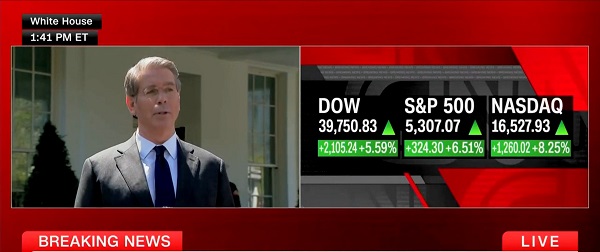Alberta
Premier Smith introduces Alberta Sovereignty Act to battle Ottawa in net-zero battle

“We are left with no choice but to create a shield to protect Albertans from Ottawa’s dangerous and unconstitutional electricity regulations”
Defending Alberta from brownouts, blackouts and soaring costs
Premier Danielle Smith has introduced an Alberta Sovereignty Within a United Canada Act resolution to protect Alberta from the federal government’s proposed net-zero electricity grid regulations to ensure Albertans have access to reliable and affordable power when and where they need it.
Alberta’s government will not put Albertans and their businesses at risk of freezing in the dark at -30 C due to the federal government’s proposed unaffordable, unreliable and unconstitutional Clean Electricity Regulations (CERs).
The federal government has been clear it is unwilling to align its electricity regulations with Alberta’s Emissions Reduction and Energy Development Plan as the province works to achieve carbon neutrality by 2050. Instead, the federal government has continued to indicate it will move ahead with its plan to implement unrealistic requirements for a net-zero electricity grid by 2035, regardless of the costs and risks to Albertans.
To protect Albertans from future brownouts, blackouts and soaring costs, Alberta’s government has introduced the first Alberta Sovereignty within a United Canada Act resolution. This resolution asks the legislative assembly of Alberta for approval to take strong, effective action over the coming months and years to counteract the harms and risks to Albertans posed by the federal CERs.
“We have tried to work with Ottawa to align their emissions-reduction efforts with our provincial plan to achieve a carbon-neutral power grid by 2050. Unfortunately, after months of meetings, they continue to reject this opportunity and remain committed to an absurdly unrealistic and unattainable goal of a net-zero power grid by 2035. We are left with no choice but to create a shield to protect Albertans from Ottawa’s dangerous and unconstitutional electricity regulations. They may be willing to expose Albertans to high costs, blackouts and brownouts, but we are not, and we will continue to ensure Albertans are protected from these destructive and unconstitutional federal policies.”
The CERs propose unrealistic rules with Criminal Code violations to achieve net-zero electricity by 2035. Alberta’s grid needs more baseload power from natural gas, but these regulations have created uncertainty and are driving away investment. This threatens the reliability and economic well-being of Alberta’s homes and businesses.
Alberta does not have enough applications for new natural gas power plants to provide the substantial new generation of power the province needs, primarily due to the investor uncertainty caused by the federal government’s extreme policies.
“The courts are on our side, science and logic are on our side, the Constitution is on our side – electricity generation is the jurisdiction of the provinces, not the federal government. It is our responsibility to provide safe, reliable and affordable electricity to all Albertans without interference from Ottawa. This is what we are doing and will continue to do.”
“The federal regulations will hurt grid reliability for families and businesses while sending costs soaring. Everything we have seen from Ottawa suggests they simply don’t care how these rules will hurt Albertans. We will not put families at risk of rationing power during the coldest days of the year.”
If passed, the Alberta Sovereignty Within a United Canada Act resolution will help protect Alberta’s electricity grid and ensure that homes and businesses across the province can access reliable, affordable power for decades to come.
The resolution asks Alberta’s cabinet to order all provincial entities not to recognize the constitutional validity of, enforce, nor cooperate in the implementation of the CERs in any manner, to the extent legally permissible. This order would not apply to private companies or individuals. The resolution also asks Alberta’s government to work with the Alberta Electric System Operator, Alberta Utilities Commission and others to implement various reforms to Alberta’s electrical system to ensure grid affordability and reliability.
In addition, the resolution instructs the government to work with industry, regulators and other groups to study the feasibility of establishing a provincial Crown corporation for the purpose of bringing and maintaining more reliable and affordable electricity onto the grid in the event that private generators find it too risky to do so under the CERs.
This Alberta Crown corporation would be a provincial entity and would not recognize the CERs as constitutionally valid. If needed, the Crown corporation would work with industry and other stakeholders to bring on needed electricity onto the grid, either through building new generation or purchasing existing generation assets (i.e. natural gas power plants) that private industry would otherwise not build or shut down due to the uncertainty and penalties established by the CERs. It could also be used as a means of assisting and partnering with industry to de-risk investments in nuclear power and other emerging green generation if needed.
Alberta must be prepared should the CERs lead to divestment in natural gas generation and power plants being turned off in 2035. This initiative would be an important first step towards protecting Albertans’ continued access to reliable and affordable electricity should this occur.
The resolution also urges the government to use all legal means necessary to oppose the federal electricity regulation, including legal challenges.
Quick facts
- According to the Constitution of Canada, legislating and regulating the development of electricity explicitly falls within the jurisdiction of the province (Section 92A (1) (c)).
- Alberta has reduced electricity emissions by 53 per cent since 2005.
- Analysis by the Alberta Electric System Operator determined that Alberta would face disproportionate risk and costs, compared with other provinces, as a result of the federal electricity regulations.
- Alberta’s grid had seven alerts during colder months in 2022 and had three alerts in summer 2023, underscoring the importance of having sufficient stable baseload power sources like gas, hydro and nuclear available year-round. Alberta must continue to rely on a diverse mix of intermittent and baseload options to prevent future brownouts and blackouts and maintain a reliable grid.
- The Public Policy Forum previously indicated that the cost of the federal electricity approach could be more than $1 trillion and as high as $1.7 trillion.
Related information
Alberta
Alberta takes big step towards shorter wait times and higher quality health care

From the Fraser Institute
On Monday, the Smith government announced that beginning next year it will change the way it funds surgeries in Alberta. This is a big step towards unlocking the ability of Alberta’s health-care system to provide more, better and faster services for the same or possibly fewer dollars.
To understand the significance of this change, you must understand the consequences of the current (and outdated) approach.
Currently, the Alberta government pays a lump sum of money to hospitals each year. Consequently, hospitals perceive patients as a drain on their budgets. From the hospital’s perspective, there’s little financial incentive to serve more patients, operate more efficiently and provide superior quality services.
Consider what would happen if your local grocery store received a giant bag of money each year to feed people. The number of items would quickly decline to whatever was most convenient for the store to provide. (Have a favourite cereal? Too bad.) Store hours would become less convenient for customers, alongside a general decline in overall service. This type of grocery store, like an Alberta hospital, is actually financially better off (that is, it saves money) if you go elsewhere.
The Smith government plans to flip this entire system on its head, to the benefit of patients and taxpayers. Instead of handing out bags of money each year to providers, the new system—known as “activity-based funding”—will pay health-care providers for each patient they treat, based on the patient’s particular condition and important factors that may add complexity or cost to their care.
This turns patients from a drain on budgets into a source of additional revenue. The result, as has been demonstrated in other universal health-care systems worldwide, is more services delivered using existing health-care infrastructure, lower wait times, improved quality of care, improved access to medical technologies, and less waste.
In other words, Albertans will receive far better value from their health-care system, which is currently among the most expensive in the world. And relief can’t come soon enough—for example, last year in Alberta the median wait time for orthopedic surgeries including hip and knee replacements was 66.8 weeks.
The naysayers argue this approach will undermine the province’s universal system and hurt patients. But by allowing a spectrum of providers to compete for the delivery of quality care, Alberta will follow the lead of other more successful universal health-care systems in countries such as Australia, Germany, the Netherlands and Switzerland and create greater accountability for hospitals and other health-care providers. Taxpayers will get a much better picture of what they’re paying for and how much they pay.
Again, Alberta is not exploring an untested policy. Almost every other developed country with universal health care uses some form of “activity-based funding” for hospital and surgical care. And remember, we already spend more on health care than our counterparts in nearly all of these countries yet endure longer wait times and poorer access to services generally, in part because of how we pay for surgical care.
While the devil is always in the details, and while it’s still possible for the Alberta government to get this wrong, Monday’s announcement is a big step in the right direction. A funding model that puts patients first will get Albertans more of the high-quality health care they already pay for in a timelier fashion. And provide to other provinces an example of bold health-care reform.
Alberta
Alberta’s embrace of activity-based funding is great news for patients

 From the Montreal Economic Institute
From the Montreal Economic Institute
Alberta’s move to fund acute care services through activity-based funding follows best practices internationally, points out an MEI researcher following an announcement made by Premier Danielle Smith earlier today.
“For too long, the way hospitals were funded in Alberta incentivized treating fewer patients, contributing to our long wait times,” explains Krystle Wittevrongel, director of research at the MEI. “International experience has shown that, with the proper funding models in place, health systems become more efficient to the benefit of patients.”
Currently, Alberta’s hospitals are financed under a system called “global budgeting.” This involves allocating a pre-set amount of funding to pay for a specific number of services based on previous years’ budgets.
Under the government’s newly proposed funding system, hospitals receive a fixed payment for each treatment delivered.
An Economic Note published by the MEI last year showed that Quebec’s gradual adoption of activity-based funding led to higher productivity and lower costs in the province’s health system.
Notably, the province observed that the per-procedure cost of MRIs fell by four per cent as the number of procedures performed increased by 22 per cent.
In the radiology and oncology sector, it observed productivity increases of 26 per cent while procedure costs decreased by seven per cent.
“Being able to perform more surgeries, at lower costs, and within shorter timelines is exactly what Alberta’s patients need, and Premier Smith understands that,” continued Mrs. Wittevrongel. “Today’s announcement is a good first step, and we look forward to seeing a successful roll-out once appropriate funding levels per procedure are set.”
The governments expects to roll-out this new funding model for select procedures starting in 2026.
* * *
The MEI is an independent public policy think tank with offices in Montreal, Ottawa, and Calgary. Through its publications, media appearances, and advisory services to policymakers, the MEI stimulates public policy debate and reforms based on sound economics and entrepreneurship.
-

 2025 Federal Election1 day ago
2025 Federal Election1 day agoRCMP memo warns of Chinese interference on Canadian university campuses to affect election
-

 Alberta2 days ago
Alberta2 days agoAlberta takes big step towards shorter wait times and higher quality health care
-

 2025 Federal Election24 hours ago
2025 Federal Election24 hours agoResearchers Link China’s Intelligence and Elite Influence Arms to B.C. Government, Liberal Party, and Trudeau-Appointed Senator
-

 Business2 days ago
Business2 days agoTrump raises China tariffs to 125%, announces 90-day pause for countries who’ve reached out to negotiate
-

 2025 Federal Election1 day ago
2025 Federal Election1 day agoThe status quo in Canadian politics isn’t sustainable for national unity
-

 Business1 day ago
Business1 day agoScott Bessent Says Trump’s Goal Was Always To Get Trading Partners To Table After Major Pause Announcement
-

 2025 Federal Election21 hours ago
2025 Federal Election21 hours agoTwo Canadian police unions endorse Pierre Poilievre for PM
-

 2025 Federal Election1 day ago
2025 Federal Election1 day agoPoilievre Announces Plan To Cut Taxes By $100,000 Per Home






